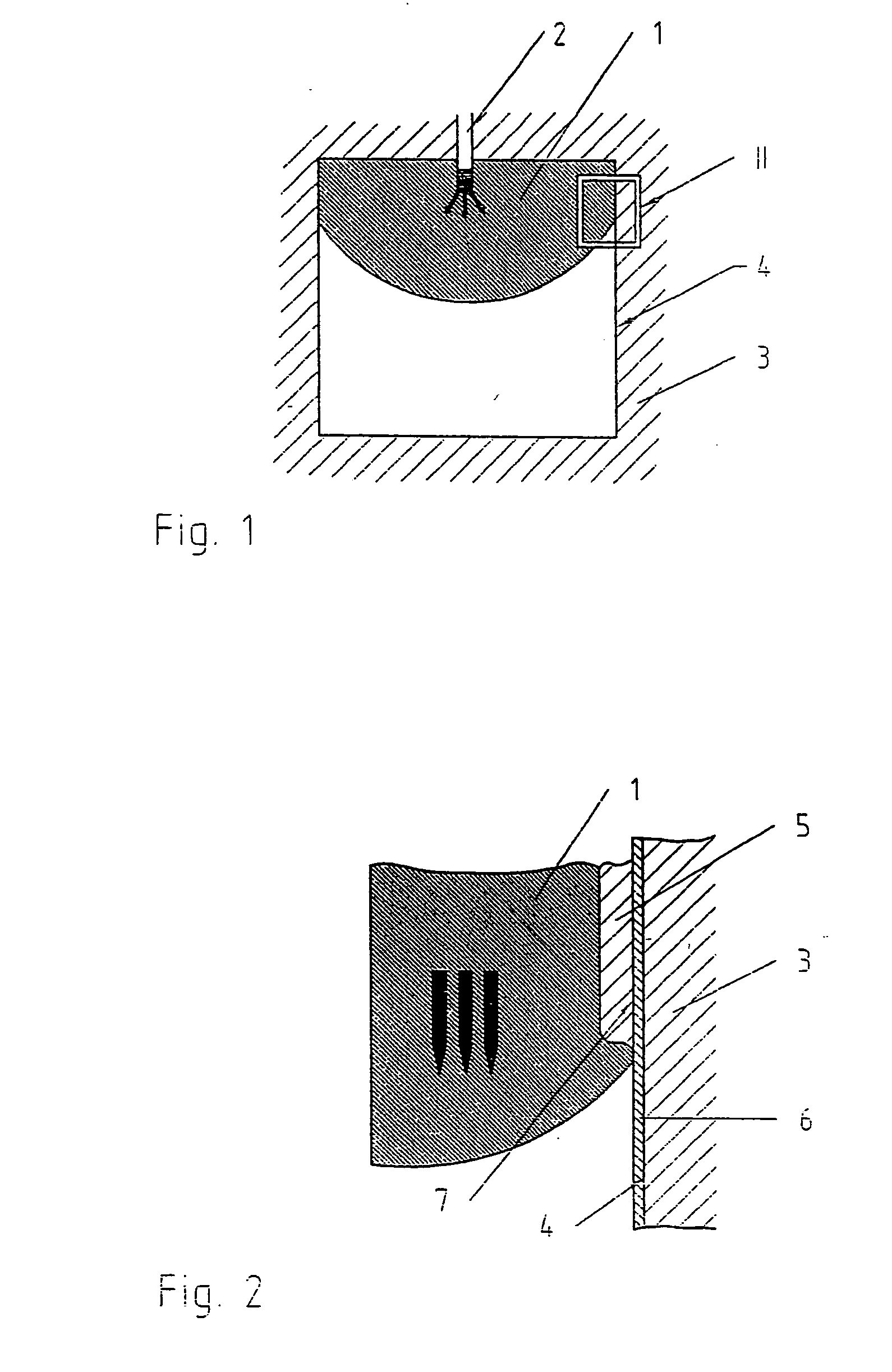Gloss level adjustment
a technology of level adjustment and gloss, applied in the field of gloss level adjustment, can solve the problems of inability to uniformly mold molten plastic to the mold wall, or to the structural details, and achieve the effect of improving the quality of the finished produ
- Summary
- Abstract
- Description
- Claims
- Application Information
AI Technical Summary
Benefits of technology
Problems solved by technology
Method used
Image
Examples
Embodiment Construction
[0031]FIG. 1 depicts—very diagrammatically—a first embodiment of a device according to the invention for the injection molding of molten material, in this case of the plastic ABS 1. The molten plastic is introduced into the mold 3 via a feed port 2. The mold 3 has a mold surface 4 that is coated with a hard material.
[0032]FIG. 2 is an enlarged view of the cut-out denoted by II in FIG. 1; it shows the area in which the mold surface 4 is first wetted by the plastic 1. As this happens, a boundary layer 5 of the plastic 1 is formed and immediately solidifies. In this boundary layer, the temperature of the plastic falls below its melting point, so that the plastic converts to the solid state. The mold surface 4 is provided with a coating 6, in this embodiment a coating of titanium aluminium nitride. The arrows indicate the flow direction of the plastic 1 that is filling the mold. By appropriately selecting the thickness of the titanium aluminium nitride coating 6 it is possible—on accou...
PUM
| Property | Measurement | Unit |
|---|---|---|
| Thickness | aaaaa | aaaaa |
| Thickness | aaaaa | aaaaa |
| Thickness | aaaaa | aaaaa |
Abstract
Description
Claims
Application Information
 Login to View More
Login to View More - R&D
- Intellectual Property
- Life Sciences
- Materials
- Tech Scout
- Unparalleled Data Quality
- Higher Quality Content
- 60% Fewer Hallucinations
Browse by: Latest US Patents, China's latest patents, Technical Efficacy Thesaurus, Application Domain, Technology Topic, Popular Technical Reports.
© 2025 PatSnap. All rights reserved.Legal|Privacy policy|Modern Slavery Act Transparency Statement|Sitemap|About US| Contact US: help@patsnap.com



